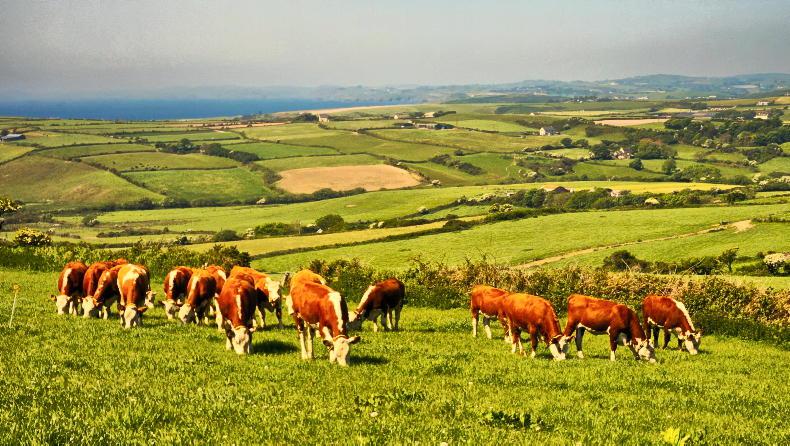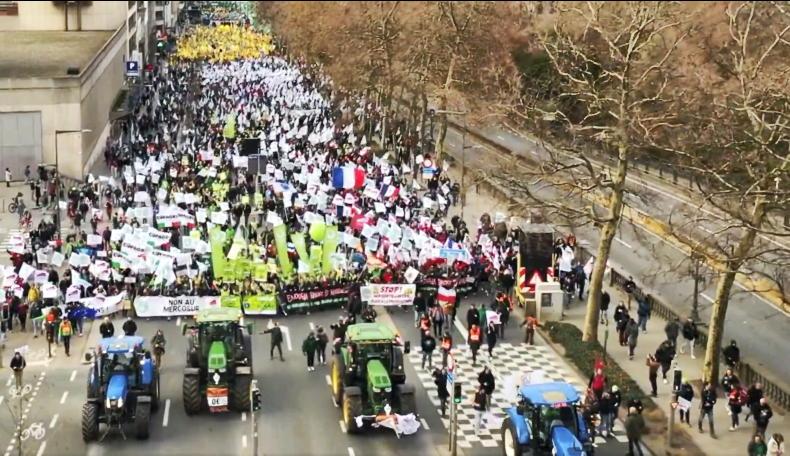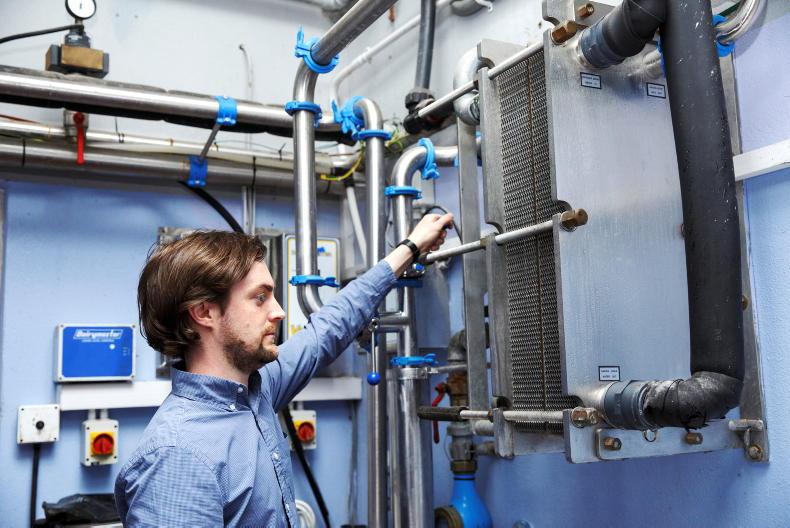If you’re not looking into solar photovoltaic (PV) panels for your farm already, then 2023 is the year to start. To put it bluntly, farmers are about to have a significant advantage over any other sector when it comes to grants for solar PV systems.
While there are many factors to consider when installing solar PV, available grant aid will have one of the biggest impacts on the system’s payback period.
The Department of Agriculture is proposing to increase the available grant aid rate for solar PV systems to 60% for all farmers under a new solar scheme in the next version of the target agricultural modernisation scheme (TAMS 3), which starts in 2023.
The Department is proposing that the solar scheme will not be subject to the overall TAMS investment ceiling, meaning solar PV will have its own separate investment ceiling of up to €90,000.
Increased size and batteries
Under previous TAMS schemes, the size of solar PV systems which were eligible for grant aid on most farms was 11kWp (kilowatt peak). However, under TAMS 3 this limit will be increased to 30kWp and 62kWp for pigs and poultry farmers. It is proposed that batteries will also be eligible for grant aid but will be limited to 50% of the capacity of the panels.
Exporting electricity
The aim of providing grant aid for solar PV under TAMS is to try and get farmers to produce as much of their own electricity requirements themselves. It is not to get farmers to install a PV system with the aim of exporting and selling the electricity.
As such, the Department stipulates that electricity generated from the panels must be consumed on the farm for farming purposes. An ‘on-farm solar PV survey’ will have to be completed and submitted with the application to prove the farm’s electricity requirement matches the planned electricity supply from the panels.
The electricity used on the farm’s dwelling house can be included in the overall farm’s electricity use but as it stands, we believe the house must be on the same electricity meter as the farm.
The Department can’t physically stop you from exporting to the grid, but it will limit the size of system you can get a grant on.

Most farm solar PV systems will eb mounted on rooftops but ground mounted systems are also eligible
These proposals are awaiting approval from the European Commission and the terms and conditions are currently being finalised.
100-cow farm with conventional 12-unit milking parlour
Here we run through a basic scenario to show how advantageous a 60% grant will be to farmers. We look at the numbers of a 30kWp solar PV system on a 100-cow dairy farm with a conventional 12-unit milking parlour. The farmer has availed of the 60% grant under the TAMS solar scheme and plans to use all of the electricity on site. The 60% grant is worth around €27,600.
The farmer uses 45,741kWh of electricity on their farm each year, with 70% used during the day. Their average electricity price works out as €0.29c/kWh and their annual electricity bill is around €13,250 plus VAT.
The solar PV system will generate around 60% of the farm’s electricity requirement and they opted not to install a battery. The key assumptions are below:
Key assumptions
Annual electricity use: 45,741kWh.Annual electricity bill: €13,250 plus VAT.Rates for electricity: 0.35c/kWh day-time, 0.15c/kWh night-time.Electricity split: 70% during the day, 30% during the night. Average electricity price: €0.29c/kWh.Main uses: bulk tank (52%), hot water (22%), vacuum pump (19%), lighting (6%) and sump pump (1%).Size of system: 30kWp with no
battery.Cost: €46,000 plus VAT. Annual output: 27,000kWh.Grant: TAMS 60%.Orientation: east and west.ESB connection: three-phase.Maximum import capacity: 30kVA.Returns
As table 1 shows, the 60% grant on the solar PV system drastically changes the payback period. The net cost of the 30kWp system is €18,400 plus VAT and, with an average electricity price of 29c/kWh, this gives a payback period of just 2.5 years. Remember, after it is paid off, around 60% of that farm’s electricity will be generated virtually for free.
Where this doesn’t work
I am regularly asked if it makes sense to install a solar PV system on a farm which has a low electricity demand.
In many cases it still does, but you just need a smaller PV system. However, the business case is now greatly helped by the fact that the farmhouse’s electricity use can be counted towards the farm’s overall use.
However, where the farmhouse is on a separate meter and the farm electricity use is very low, the economics may be more challenging.
For most farms, it still doesn’t add up to install a solar PV system with the sole purpose of exporting all of the electricity to the grid.
If you’re not looking into solar photovoltaic (PV) panels for your farm already, then 2023 is the year to start. To put it bluntly, farmers are about to have a significant advantage over any other sector when it comes to grants for solar PV systems.
While there are many factors to consider when installing solar PV, available grant aid will have one of the biggest impacts on the system’s payback period.
The Department of Agriculture is proposing to increase the available grant aid rate for solar PV systems to 60% for all farmers under a new solar scheme in the next version of the target agricultural modernisation scheme (TAMS 3), which starts in 2023.
The Department is proposing that the solar scheme will not be subject to the overall TAMS investment ceiling, meaning solar PV will have its own separate investment ceiling of up to €90,000.
Increased size and batteries
Under previous TAMS schemes, the size of solar PV systems which were eligible for grant aid on most farms was 11kWp (kilowatt peak). However, under TAMS 3 this limit will be increased to 30kWp and 62kWp for pigs and poultry farmers. It is proposed that batteries will also be eligible for grant aid but will be limited to 50% of the capacity of the panels.
Exporting electricity
The aim of providing grant aid for solar PV under TAMS is to try and get farmers to produce as much of their own electricity requirements themselves. It is not to get farmers to install a PV system with the aim of exporting and selling the electricity.
As such, the Department stipulates that electricity generated from the panels must be consumed on the farm for farming purposes. An ‘on-farm solar PV survey’ will have to be completed and submitted with the application to prove the farm’s electricity requirement matches the planned electricity supply from the panels.
The electricity used on the farm’s dwelling house can be included in the overall farm’s electricity use but as it stands, we believe the house must be on the same electricity meter as the farm.
The Department can’t physically stop you from exporting to the grid, but it will limit the size of system you can get a grant on.

Most farm solar PV systems will eb mounted on rooftops but ground mounted systems are also eligible
These proposals are awaiting approval from the European Commission and the terms and conditions are currently being finalised.
100-cow farm with conventional 12-unit milking parlour
Here we run through a basic scenario to show how advantageous a 60% grant will be to farmers. We look at the numbers of a 30kWp solar PV system on a 100-cow dairy farm with a conventional 12-unit milking parlour. The farmer has availed of the 60% grant under the TAMS solar scheme and plans to use all of the electricity on site. The 60% grant is worth around €27,600.
The farmer uses 45,741kWh of electricity on their farm each year, with 70% used during the day. Their average electricity price works out as €0.29c/kWh and their annual electricity bill is around €13,250 plus VAT.
The solar PV system will generate around 60% of the farm’s electricity requirement and they opted not to install a battery. The key assumptions are below:
Key assumptions
Annual electricity use: 45,741kWh.Annual electricity bill: €13,250 plus VAT.Rates for electricity: 0.35c/kWh day-time, 0.15c/kWh night-time.Electricity split: 70% during the day, 30% during the night. Average electricity price: €0.29c/kWh.Main uses: bulk tank (52%), hot water (22%), vacuum pump (19%), lighting (6%) and sump pump (1%).Size of system: 30kWp with no
battery.Cost: €46,000 plus VAT. Annual output: 27,000kWh.Grant: TAMS 60%.Orientation: east and west.ESB connection: three-phase.Maximum import capacity: 30kVA.Returns
As table 1 shows, the 60% grant on the solar PV system drastically changes the payback period. The net cost of the 30kWp system is €18,400 plus VAT and, with an average electricity price of 29c/kWh, this gives a payback period of just 2.5 years. Remember, after it is paid off, around 60% of that farm’s electricity will be generated virtually for free.
Where this doesn’t work
I am regularly asked if it makes sense to install a solar PV system on a farm which has a low electricity demand.
In many cases it still does, but you just need a smaller PV system. However, the business case is now greatly helped by the fact that the farmhouse’s electricity use can be counted towards the farm’s overall use.
However, where the farmhouse is on a separate meter and the farm electricity use is very low, the economics may be more challenging.
For most farms, it still doesn’t add up to install a solar PV system with the sole purpose of exporting all of the electricity to the grid.











SHARING OPTIONS